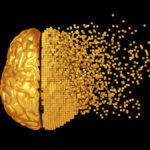More graph databases. The Year of the Graph Newsletter Vol. 8, December 2018

Redis announces RedisGraph and a benchmark, TigerGraph goes AWS, AWS hands-on experiences, new features from Stardog and AnzoGraph, Graphs and Machine Learning, GraphQL, Atlas, DBpedia, Connected Data London and the Year of the Graph.
I often get asked about graph databases – what they are, what are they good for, how to choose one, as well as more specific questions. This is why i have published the Year of the Graph report to answer all those questions. Lately i have been presenting the Year of the Graph in various venues, including Big Data Spain, one of the biggest and most forward-looking events in Europe.
Slides and video from this talk are now online. If after watching you are sold on the idea of boosting your understanding of graph databases and making an educated choice, you have about one month until the end of 2018 to get the report at a bargain price. This is when code 20OFF expires – start pitching to your boss now.
The Year of the Graph
What is a graph database? Do you really need one, and if yes, how do you choose? Graph databases have been around for almost 20 years, but it was AWS and Microsoft moving in the domain, with Neptune and Cosmos DB respectively, that attracted widespread interest. So this hitherto niche domain has…
Redis is a well-known key-value store, but it seems its people have the ambition to build a Graph database on top of it. They have just announced version 1.0 of RedisGraph, and released a benchmark. RedisGraph supports the Cypher query language (though not in its entirety). It uses GraphBLAS (Basic Linear Algebra Subprograms), which Redis says is a highly optimized library for sparse matrix operations. Caveats: single thread, single machine only for the time being.
Benchmarking RedisGraph 1.0 | Redis Labs
Introducing RedisGraph Today we are happy to announce the general availability of RedisGraph v1.0. RedisGraph is a Redis module developed by Redis Labs to add graph database functionality to Redis. We released RedisGraph in preview/beta mode over six months ago, and appreciate all of the great feedback and suggestions we’ve received from the community and…
TigerGraph has responded to the RedisGraph benchmark, since in fact it was TigerGraph’s benchmark that the RedisGraph people executed. The TigerGraph team points out what they believe to be problematic with RedisGraph’s benchmark. TigerGraph has also announced a managed version on AWS coming up in 2019.
On “Benchmarking RedisGraph 1.0”
TigerGraph is the fastest on deep link analytics on large datasets, RedisGraph is good for small datasets and simple 1-hop queries, RedisGraph does not support concurrent read and write queries, RedisGraph declined to show their performance for loading or for analytical queries like PageRank or community detection.
Speaking of AWS, Brian Hall from Expero shares his impressions of using AWS Neptune. The Neptune team has also put together a couple of blog posts on using Neptune with Gremlin and with SageMaker – Jupyter Notebooks.
Expero Blog | Amazon Neptune: First Impressions
Amazon Neptune is Amazon’s new Tinkerpop/Gremlin and RDF/SPARQL compliant graph database – in direct competition with DataStax, Neo4j, CosmosDB, JanusGraph and several others.
Neo4j has added integration with Apache Kafka. Not a fully-fledged Connector yet, but the plan is to get there.
A New Neo4j Integration with Apache Kafka – neo4j – Medium
Today we want to make this available in a first release under an Apache License for you to try out and test. It works with Neo4j from 3.4.x and Kafka from 0.10.x. To use the procedure you have to add…
Stardog has added the option to integrate MongoDB sources as a virtual graph.
Native MongoDB Support is Here!
We’re pleased to announce a major new release of Stardog that includes native support for unifying MongoDB data silos in Stardog. Unification of all data, far and wide, is crucial to building a comprehensive enterprise-level knowledge graph. At Stardog, we cater to the proliferation of different types of data sources as organizations grow and build new applications.
AnzoGraph is adding support for Labeled Property Graphs via RDF*
How to Create and Query Labeled Property Graphs in AnzoGraph – DZone Database
AnzoGraph is a native, massively parallel processing (MPP) graph OLAP database purpose-built for interactive data warehousing analytics and graph analytics. AnzoGraph supports not only semantic graphs, but also labeled property graphs using the RDF* proposed W3C standard. This article will explain how to create property graphs in AnzoGraph, including loading and inserting properties, and how to query your property graphs.
The Octavian team is working on combining Graphs with Deep Learning to build a query engine.
Towards building the next generation database query engine
In the 1970s the relational database was born. Today, these still form the backbone of our information systems, with typical Fortune 500 companies running thousands of SQL databases. Over half of enterprise companies are beginning to explore machine learning, what if this is because their current databases are inadequate for the company’s informational needs?
GraphQL is not a graph query language, it’s a standard for streamlining access to APIs. But it “emulates the elegant simplicity of a graph database in terms of how it understands and exposes the data and application connections that the individual APIs represent”, according to Geoff Schmidt, the co-founder and CEO of Apollo. Sometimes Sparql is too general for exposure to random public usage, whereas a kind of simpler parameterized lookup can be more predictable in its behaviour.
Will GraphQL Become a Standard for the New Data Economy?
Don’t look now but a new language called GraphQL is emerging that could radically simplify how developers use APIs to get data into applications, and potentially provide a graph-like alternative to procedural REST. The company behind the open source software, Apollo, today announced the GraphQL Platform to standardize access to the new technology.
Apache Atlas is an open-source metadata management system that can be used to facilitate data governance and utilizes some RDF data models for interoperability. Jing Chen He from IBM describes how Atlas can be used on top of JanusGraph.
Apache Atlas and JanusGraph – Graph-based Meta Data Management
Gain a basic understanding of graph-based meta data management in enterprise data governance with Apache Atlas as a prime example.
DBpedia has announced Databus, an initiative to facilitate access to structured data. The idea is to create an access platform not only to Wikipedia (DBpedia Core) but also Wikidata and then to all other knowledge graphs and databases that are available. Sebastian Hellmann from the University of Leipzig, who sits on the board of DBpedia, discusses with Andrea Volpini from WordLift.
The DBpedia Databus – Transforming Linked Data into a Networked Data Economy – WordLift Blog
DBpedia has served as a Unified Access Platform for the data in Wikipedia for over a decade. During that time DBpedia has established many of the best practices for publishing data on the web. In fact, that is the project that hosted a knowledge graph even before Google coined the term.
DBpedia, Atlas, GraphQL, Graph Databases, Deep Learning and Graphs..what do all of these things have in common? They were all featured in Connected Data London! If you were there, you know. If not, and you want to get an idea of what you missed, all talks have been released on the Connected Data London YouTube channel. Subscribe to stay up to date!
Connected Data London
The leading conference for those who use the relationships, meaning and context in Data to achieve great things.
Would you like to receive the latest Year of the Graph Newsletter in your inbox each month? Easy – just signup below. Have some news you think should be featured in an upcoming newsletter? Easy too – drop me a line here.





